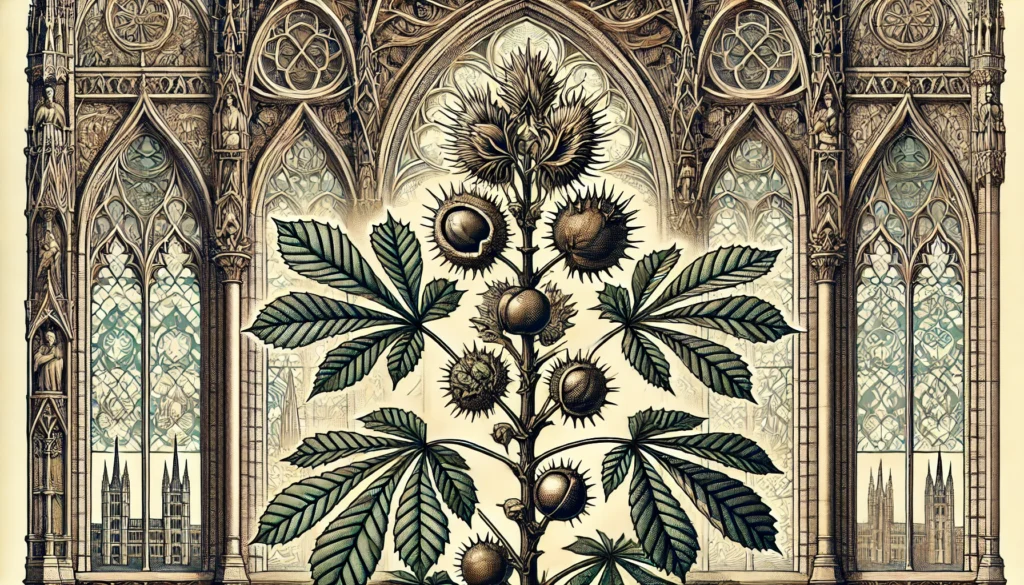

Home » Cat Plants » The Threat of the Horse Chestnut Plant to Cats

The horse chestnut tree (Aesculus hippocastanum), also known as buckeye, is highly toxic to cats. All parts of this tree, including the leaves, bark, flowers and conkers (seeds), contain harmful compounds called saponins and aesculin.
Cats are not allergic to horse chestnut per se, but ingesting any part of the tree can lead to severe poisoning. Horse chestnut trees are commonly found in parks, gardens, and along streets in many parts of the world.
Ingestion may cause mild gastrointestinal upset, but is generally not life-threatening.
Ingestion can result in mild symptoms like vomiting, diarrhea, or drooling. Rarely fatal but may require veterinary care.
Eating these plants can lead to more pronounced symptoms like abdominal pain, lethargy, or difficulty breathing. Veterinary intervention may be necessary.
Ingesting even small amounts can cause severe symptoms like organ damage, seizures, or cardiac failure without rapid treatment.
All parts of these plants are extremely poisonous to cats and can quickly lead to death, even with immediate veterinary care.
** Please note: Please note that toxicity level can vary based on the amount ingested and the specific cat. It's always best to keep these plants completely inaccessible to cats and seek immediate veterinary care or call the poison hotline if you suspect your cat has ingested any part of a toxic plant.
If a cat ingests any part of the horse chestnut tree, they may experience the following symptoms:
If you suspect your cat has ingested horse chestnut, seek immediate veterinary care. Your vet will likely perform the following steps to diagnose horse chestnut poisoning:
For more information on treating horse chestnut poisoning, see: Cardiotoxic plant poisoning in Cats

A: Yes, Horse Chestnut is toxic to cats. Ingesting any part of this plant can cause symptoms such as vomiting, diarrhea, and abdominal pain.
A: Symptoms of Horse Chestnut poisoning in cats include vomiting, diarrhea, and drooling. Severe cases may lead to tremors, weakness, and even seizures.
A: If your cat has ingested Horse Chestnut, seek immediate veterinary care. Treatment often involves supportive care to manage symptoms and prevent further complications.
A: Yes, other plants like Buckeye and Red Maple are also toxic to cats. It’s important to keep these and other harmful plants out of reach of your pets.
A: To prevent your cat from eating Horse Chestnut, avoid planting it in areas accessible to your cat or opt for non-toxic plants. Providing alternative chew toys and engaging activities can help deter your cat from chewing on toxic plants.
A: If your cat shows signs of poisoning after eating Horse Chestnut, contact your veterinarian immediately. Prompt treatment is crucial to alleviate symptoms and prevent serious health issues.
The horse chestnut tree is native to the Balkan Peninsula in southeastern Europe. It was introduced to other parts of Europe, North America, and Asia as an ornamental tree in the 16th century. The tree gets its name from the historic use of its seeds to treat ailments in horses. However, the conkers are actually toxic to horses and other animals.
In some areas, horse chestnuts are used in the children’s game of conkers, where the seeds are threaded onto strings and knocked against each other until one breaks.
Please note: The information shared in this post is for informational purposes only and should not be considered as veterinary medical advice.
🐾 A hilarious or heart-melting cat video
🐾 Our latest paws-on review of a cool cat toy